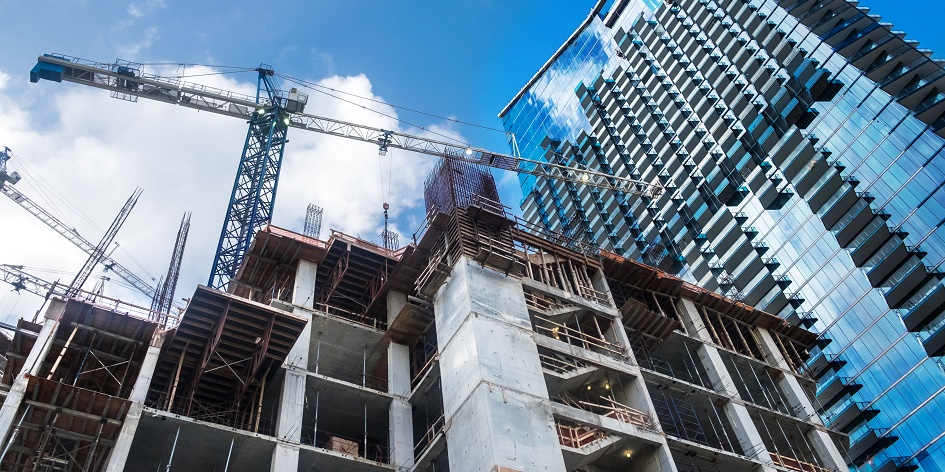

Climate change is the change in global climate patterns evident from the mid to late twentieth century, is one of the most serious threats to human society, and ironically is a threat that humans have created themselves. The concentration of Greenhouse gases has increased globally since 1750, and the main contributor is carbon dioxide (CO2) which has also increased dramatically.
The term "carbon footprint" was coined around a decade ago as a tool for measuring Green House Gases (GHG) emissions in the context of the climate change discussion. In simple terms, a carbon footprint is the amount of carbon dioxide released into the atmosphere due to an individual's, organization's, or community's activity.
 Infrastructure is one of the key drivers of growth, employment, and better quality of life in developing economies and emerging markets. But this development or growth comes at a cost. The construction industry is among one of the leading industries contributing the largest carbon footprint. And approximately 70% of global Green House Gas emissions come from the construction industry. Buildings equivalent to the size of the city of Paris are being built every week, but less than one percent of them are assessed to determine their carbon footprint. This is despite the fact that GHG emissions from buildings contributed 8.6 billion t-CO2-e in 2004 (according to the 4th Assessment Report of the Intergovernmental Panel on Climate Change (IPCC). It is also predicted that this number could reach up to 15.6 billion t-CO2-e by 2030, which creates an increase of 26% CO2 which further accounts for 30-40% of the total GHG emissions. As a result, the construction industry doesn’t know where it stands in terms of carbon emissions.
Infrastructure is one of the key drivers of growth, employment, and better quality of life in developing economies and emerging markets. But this development or growth comes at a cost. The construction industry is among one of the leading industries contributing the largest carbon footprint. And approximately 70% of global Green House Gas emissions come from the construction industry. Buildings equivalent to the size of the city of Paris are being built every week, but less than one percent of them are assessed to determine their carbon footprint. This is despite the fact that GHG emissions from buildings contributed 8.6 billion t-CO2-e in 2004 (according to the 4th Assessment Report of the Intergovernmental Panel on Climate Change (IPCC). It is also predicted that this number could reach up to 15.6 billion t-CO2-e by 2030, which creates an increase of 26% CO2 which further accounts for 30-40% of the total GHG emissions. As a result, the construction industry doesn’t know where it stands in terms of carbon emissions.

The Overseas Development Institute estimates that over 720 million people could be pushed back into extreme poverty by 2050 as a result of climate change, while the WHO predicts that the number of deaths attributable to the harmful effects of emissions from key infrastructure industries will rise from the current 150,000 per year to 250,000 by 2030.
The Indian construction industry is one of the largest in terms of the volume of raw materials or natural resources consumed and the volume of construction materials manufactured. The consumption of energy in the manufacturing and transportation of building materials is directly related to GHG emissions and the related environmental consequences.
So does this mean we need to put a stop to our infrastructural growth? No. But the part of the solution lies in low-carbon infrastructure.
As the name suggests, low-carbon infrastructure generates lesser carbon emissions than conventional infrastructure and could help in building resilience in vulnerable countries while protecting against exposure to extreme climatic conditions. More importantly, in emerging markets and developing economies (EMDE) with disproportionate exposure to climate change impacts, low-carbon infrastructure can help in preventing a climate-related reversal of development gains.

The Emissions Gap Report 2020 from the UN Environment Programme (UNEP) found that green infrastructure could potentially cut up to 25% off predicted 2030 greenhouse gas emissions and bring the world closer to meeting the 2 degrees Celsius goal of the Paris Agreement on Climate Change. Still, a lot more has to be done to get the temperature down to 1.5 degrees Celcius.
The governments should assist in achieving these gains by systematically including building decarbonization measures into recovery packages; increasing renovation rates, channeling investments into low-carbon buildings, providing jobs, and increasing real estate value.
Considering that the construction activities have dropped by 20 to 30 percent since the pandemic, and around 10% of overall jobs have been lost or are at risk across the construction sector, low-carbon infrastructure programs can help create jobs, boost economic activity, and activate local value chains.
We urgently need to address the carbon emissions from buildings and construction, which account for about 40% of global carbon emissions. We have to challenge the dominance of steel and concrete. Whether zero carbon steel and concrete become future materials will be determined by how quickly those industries evolve in the face of new and disruptive technology.